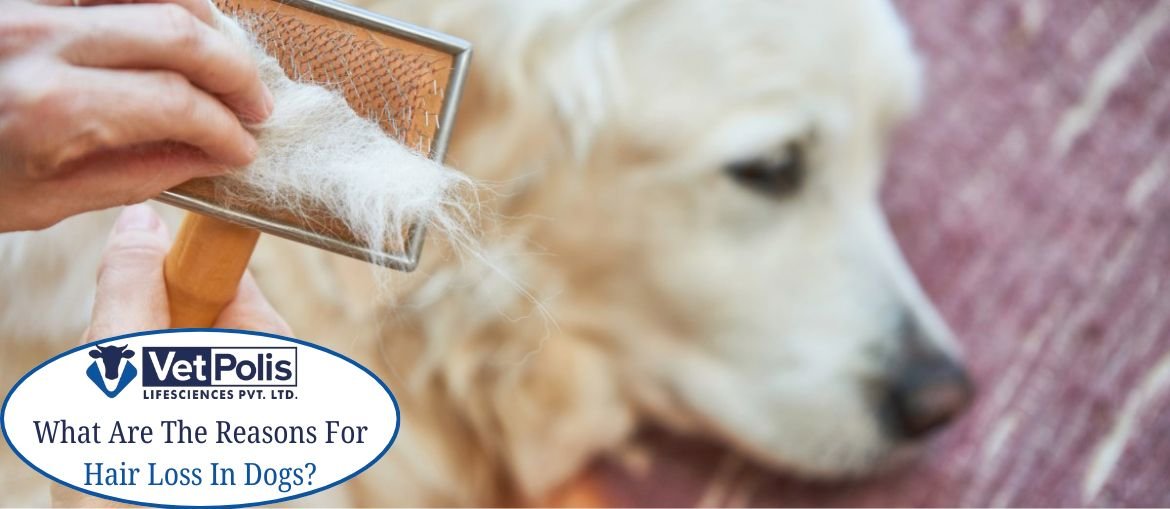What Are The Reasons For Hair Loss In Dogs?

A dog’s coat is an important indicator of its health. A shiny and full coat usually means a happy and well-cared-for dog, while excessive hair loss can be a sign of a disease. While shedding is normal for most dog breeds, excessive or patchy hair loss can be a cause for concern. There are many reasons why dogs lose hair, ranging from simple seasonal shedding to more serious health problems. Infections, parasites, allergies, and hormonal imbalances can be the cause of hair loss. In some cases, poor nutrition can also play an important role. It is important for dog owners to take the right steps when it comes to addressing this issue.
1. Seasonal Shedding
Some dogs shed naturally, especially when the seasons change. Breeds like Labradors, German Shepherds, and Huskies shed heavily during the spring and fall to adjust to the temperature changes. This is completely normal and does not indicate any type of health problem. To manage seasonal shedding, regular brushing is important. Brushing your dog’s coat helps remove loose fur, which prevents matting and reduces the amount of hair in your home. Bathing your dog with a dog-friendly shampoo will keep the coat clean and healthy. If your dog’s shedding remains excessive, leads to bald patches, and is accompanied by skin irritation, then it is not seasonal shedding, and it is the right time to visit a vet.
2. Skin Irritation
Just like humans, dogs can also suffer from allergies that lead to skin irritation and hair loss. Allergies can be due to environmental factors, food, or flea bites. When dogs have allergies, they scratch, lick, and bite their skin. To help a dog with allergies, you need to identify the cause. If you think food is the issue, switch to a good diet. If you think the environment is the problem, keep your dog’s living space clean and consider approved medications. A vet can perform allergy tests and recommend the best treatment.
3. Hormonal Imbalance
Hormonal problems can lead to hair loss in dogs. Sometimes, low thyroid hormone levels can cause bald spots or changes in skin texture, thinning hair, etc. Low thyroid hormone levels are common in older dogs and lead to weight gain, lethargy, and flaky skin. Cushing’s disease results in frequent urination, a bloated belly, excessive thirst, etc. These conditions require veterinary diagnosis through blood tests, and a veterinarian can help you with them.
4. Infections
Ticks, fleas, and mites are common parasites that can lead to hair loss. These tiny pests bite the skin and cause itching and irritation. Dogs can get mange, a skin disease caused by mites, which leads to hair loss. Fungal and bacterial infections can also cause bald spots. Ringworm, a common fungal infection, leads to circular patches of hair loss and is highly contagious. Bacterial infections resulting from excessive scratching or wounds can cause hair loss and redness. A vet-prescribed antifungal and antibacterial treatment can clear up this problem.
5. Stress and Anxiety
Dogs can also experience stress and anxiety, which leads to chewing, scratching, or excessive licking. This results in hair loss, especially on the paws, legs, or tails. Common stress issues include changes in the environment, lack of mental stimulation, or separation anxiety. Provide plenty of exercise, puzzle toys, and a stable routine, as this can calm down nervous dogs. In some cases, calming supplements may be needed to manage anxiety.
It is very important to understand the common reasons for hair loss in pets. Regular grooming, vet check-ups, and a balanced diet are essential to keep your dog’s coat healthy.
